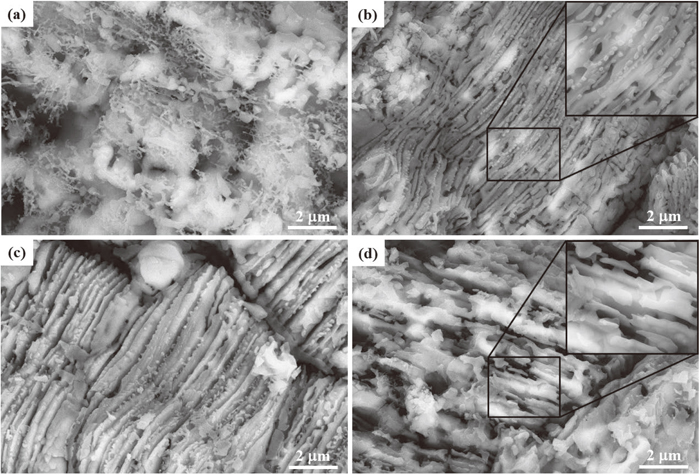Volume 59, Issue 6
Displaying 1-29 of 29 articles from this issue
- |<
- <
- 1
- >
- >|
Publication Data
-
2019 Volume 59 Issue 6 Pages Cover-
Published: June 15, 2019
Released on J-STAGE: June 18, 2019
Download PDF (431K) -
2019 Volume 59 Issue 6 Pages Editorial-
Published: June 15, 2019
Released on J-STAGE: June 18, 2019
Download PDF (587K) -
2019 Volume 59 Issue 6 Pages Contents-
Published: June 15, 2019
Released on J-STAGE: June 18, 2019
Download PDF (523K)
Review Articles
-
Article type: Review
2019 Volume 59 Issue 6 Pages 939-955
Published: June 15, 2019
Released on J-STAGE: June 18, 2019
Download PDF (1097K) Full view HTML
Casting and Solidification
-
Article type: Review
2019 Volume 59 Issue 6 Pages 956-972
Published: June 15, 2019
Released on J-STAGE: June 18, 2019
Download PDF (1796K) Full view HTML
Regular Articles
Fundamentals of High Temperature Processes
-
Article type: Regular Article
2019 Volume 59 Issue 6 Pages 973-980
Published: June 15, 2019
Released on J-STAGE: June 18, 2019
Download PDF (1465K) Full view HTML -
Article type: Regular Article
2019 Volume 59 Issue 6 Pages 981-987
Published: June 15, 2019
Released on J-STAGE: June 18, 2019
Download PDF (1374K) Full view HTML
Ironmaking
-
Article type: Regular Article
2019 Volume 59 Issue 6 Pages 988-997
Published: June 15, 2019
Released on J-STAGE: June 18, 2019
Advance online publication: March 02, 2019Download PDF (1703K) Full view HTML -
Article type: Regular Article
2019 Volume 59 Issue 6 Pages 998-1006
Published: June 15, 2019
Released on J-STAGE: June 18, 2019
Advance online publication: March 02, 2019Download PDF (1806K) Full view HTML -
Article type: Regular Article
2019 Volume 59 Issue 6 Pages 1007-1010
Published: June 15, 2019
Released on J-STAGE: June 18, 2019
Download PDF (471K) Full view HTML -
Article type: Regular Article
2019 Volume 59 Issue 6 Pages 1011-1017
Published: June 15, 2019
Released on J-STAGE: June 18, 2019
Download PDF (1362K) Full view HTML -
Article type: Regular Article
2019 Volume 59 Issue 6 Pages 1018-1026
Published: June 15, 2019
Released on J-STAGE: June 18, 2019
Advance online publication: March 12, 2019Download PDF (1366K) Full view HTML -
Article type: Regular Article
2019 Volume 59 Issue 6 Pages 1027-1032
Published: June 15, 2019
Released on J-STAGE: June 18, 2019
Advance online publication: March 11, 2019Download PDF (1100K) Full view HTML -
Article type: Regular Article
2019 Volume 59 Issue 6 Pages 1033-1040
Published: June 15, 2019
Released on J-STAGE: June 18, 2019
Download PDF (775K) Full view HTML
Casting and Solidification
-
Article type: Regular Article
2019 Volume 59 Issue 6 Pages 1041-1048
Published: June 15, 2019
Released on J-STAGE: June 18, 2019
Download PDF (1625K) Full view HTML -
Article type: Regular Article
2019 Volume 59 Issue 6 Pages 1049-1056
Published: June 15, 2019
Released on J-STAGE: June 18, 2019
Download PDF (1588K) Full view HTML -
Article type: Regular Article
2019 Volume 59 Issue 6 Pages 1057-1063
Published: June 15, 2019
Released on J-STAGE: June 18, 2019
Advance online publication: March 12, 2019Download PDF (2937K) Full view HTML -
Article type: Regular Article
2019 Volume 59 Issue 6 Pages 1064-1071
Published: June 15, 2019
Released on J-STAGE: June 18, 2019
Download PDF (1893K) Full view HTML -
Article type: Regular Article
2019 Volume 59 Issue 6 Pages 1072-1080
Published: June 15, 2019
Released on J-STAGE: June 18, 2019
Advance online publication: April 01, 2019Download PDF (1702K) Full view HTML
Instrumentation, Control and System Engineering
-
Article type: Regular Article
2019 Volume 59 Issue 6 Pages 1081-1088
Published: June 15, 2019
Released on J-STAGE: June 18, 2019
Advance online publication: February 27, 2019Download PDF (1156K) Full view HTML -
Article type: Regular Article
2019 Volume 59 Issue 6 Pages 1089-1097
Published: June 15, 2019
Released on J-STAGE: June 18, 2019
Download PDF (788K) Full view HTML
Chemical and Physical Analysis
-
Article type: Regular Article
2019 Volume 59 Issue 6 Pages 1098-1104
Published: June 15, 2019
Released on J-STAGE: June 18, 2019
Advance online publication: January 31, 2019Download PDF (862K) Full view HTML
Welding and Joining
-
Article type: Regular Article
2019 Volume 59 Issue 6 Pages 1105-1112
Published: June 15, 2019
Released on J-STAGE: June 18, 2019
Download PDF (1198K) Full view HTML
Surface Treatment and Corrosion
-
Article type: Regular Article
2019 Volume 59 Issue 6 Pages 1113-1118
Published: June 15, 2019
Released on J-STAGE: June 18, 2019
Download PDF (917K) Full view HTML
Transformations and Microstructures
-
Article type: Regular Article
2019 Volume 59 Issue 6 Pages 1119-1127
Published: June 15, 2019
Released on J-STAGE: June 18, 2019
Download PDF (4627K) Full view HTML -
Article type: Regular Article
2019 Volume 59 Issue 6 Pages 1128-1135
Published: June 15, 2019
Released on J-STAGE: June 18, 2019
Advance online publication: March 05, 2019Download PDF (1777K) Full view HTML
Mechanical Properties
-
Article type: Regular Article
2019 Volume 59 Issue 6 Pages 1136-1144
Published: June 15, 2019
Released on J-STAGE: June 18, 2019
Download PDF (1668K) Full view HTML
Social and Environmental Engineering
-
Article type: Regular Article
2019 Volume 59 Issue 6 Pages 1145-1151
Published: June 15, 2019
Released on J-STAGE: June 18, 2019
Advance online publication: March 08, 2019Download PDF (1557K) Full view HTML
Erratum
-
2019 Volume 59 Issue 6 Pages 1152
Published: June 15, 2019
Released on J-STAGE: June 18, 2019
Download PDF (526K)
- |<
- <
- 1
- >
- >|



